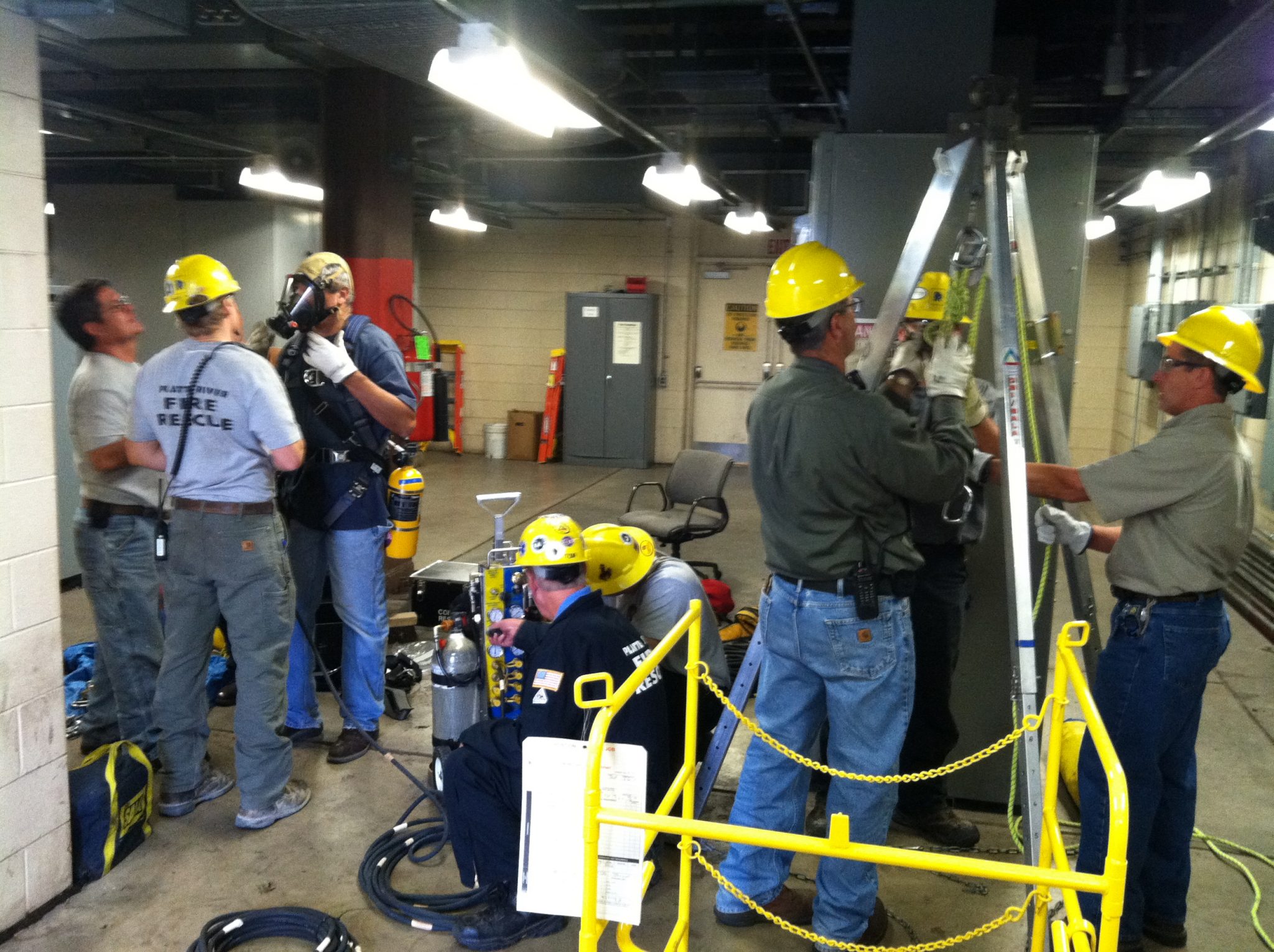

How to Develop Your Own Confined Space Rescue Plan

Time is always of the essence during a rescue, whether it's due to injury or a medical emergency, and you need to act quickly. Worse yet, if you haven't consulted with first responders in advance, they may not arrive with the necessary confined space rescue equipment. Your local fire department may arrive within a few minutes, but that may not be fast enough. Your confined space safety plan should already include personnel and equipment on site to perform rescue and provide first aid. Should You Call 911 for Confined Space Rescue?Īlthough calling 911 when you have an emergency is highly recommended, one of the best confined space safety tips you can get is to think about it first.

It is also essential that all anchor points, lifelines, hoists, and other equipment used in confined space be capable of safely and simultaneously supporting the weight of both an entrant and a rescuer. Anyone performing entry rescues must be professionally trained in order to protect themselves and the victim. This is, by far, the most dangerous type of rescue reserved for cases when there is loss of consciousness or other incapacitating injury. If self-rescue and non-entry rescue are not options, you'll need to send someone into the confined space to perform a rescue. Rescues of this type may involve directing the entrant to safety, opening the space from the outside, or by pulling the individual out with confined space rescue equipment, such as with a tripod, lanyard, and safety harness. In general, the rescue method that exposes the fewest number of workers to risk of harm is non-entry rescue, in which rescuers remain outside the confined space while bringing entrants safely out. This is why having all equipment and personnel needed for rescue operations on-site and ready to use is always required for any confined space work. If an entrant can’t self-rescue in an emergency, your rescue team needs to spring into action.

Self-rescue also involves fewer individuals, which minimizes risks for all employees on-site, both in and outside the confined space.
#CONFINED SPACE RESCUE TEAM FREE#
When someone can free themselves from the space without assistance, it generally means they are not seriously injured. This is the ideal form of rescue since it usually means the entrant has recognized a hazard (such as dangerously rising or falling temperature) or had a minor accident and evacuated the confined space on their own. In some cases, entrants will be able to self-rescue from a potentially dangerous confined space situation. Depending on the space and the situation, any of the three major types of rescue may be required: Self-Rescue OSHA does not specify how confined space rescues must take place. But it’s important to remember that every confined space and each job to be performed within it has different features, and any rescue operation undertaken would have to be unique, as well. There are countless confined space safety tips, training methods, programs, books, and classes that will teach you how to perform a confined space rescue. When you are responsible for workers in confined spaces, it's important to stay up to date on best practices. While the basic criteria apply to these spaces, there are also additional hazards to deal with, such as low oxygen, gas in the atmosphere, or other hazards such as the risk of falling, engulfment, or entrapment. In some cases, you'll need to deal with a Permit Required Confined Space. There are always dangers when working in confined spaces. A few examples of common confined spaces include: How Is a Confined Space Defined?Īccording to OSHA, a confined space is one that is large enough for a worker to enter, but has limited entry and exit points, and is not designed for continuous occupation. But it’s also your responsibility to, and with the right confined space rescue equipment, rescue procedure, and proper training, it is possible. We are the new alternative to training and maintaining your own in house rescue team.Ĭontact us with your confined space rescue needs.Ĭheck our calendar for upcoming classes or contact us to customize a class that is perfect for your business.Keeping both rescuers and rescuees safe during a confined space rescue can be a challenge. Hands-on training and education to fit your Rescue, Medical, and Hazmat needsĮxperienced.Rescue procedure & Standard Operating Guideline (SOG) development.We specialize in both confined space rescue with regards to OSHA 1910.146 and high level/fall protection rescue with regards to the ANSIz359 standard for any repair or construction in the vertical environment. We are an innovative team that was developed to manage your confined space and high level risk. For over 25 years Rescue Resources has built a solid reputation by providing quality confined space rescue and entry services.


 0 kommentar(er)
0 kommentar(er)
